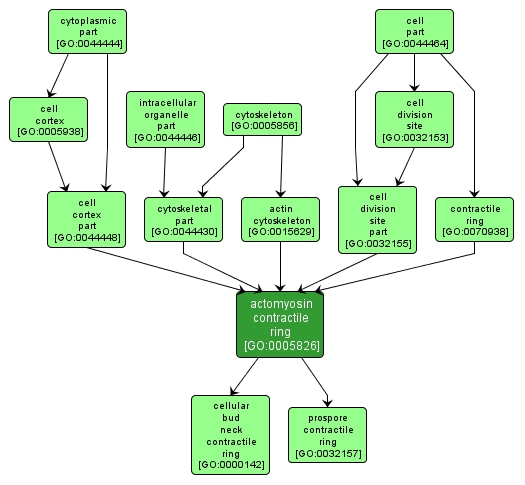| Desc: |
A cytoskeletal structure composed of actin filaments and myosin that forms beneath the plasma membrane of many cells, including animal cells and yeast cells, in a plane perpendicular to the axis of the spindle, i.e. the cell division plane. Ring contraction is associated with centripetal growth of the membrane that divides the cytoplasm of the two daughter cells. In animal cells, the contractile ring is located inside the plasma membrane at the location of the cleavage furrow. In budding fungal cells, e.g. mitotic S. cerevisiae cells, the contractile ring forms beneath the plasma membrane at the mother-bud neck before mitosis. |














